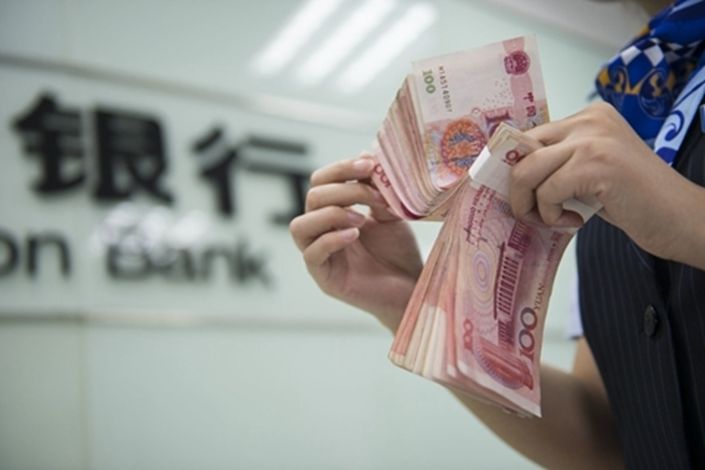Ling Huawei: What to Do About Chinese Banks’ Nonperforming Assets?

There have been ups and downs in China’s economic cycles due to changes in the general environment and fallout from the Covid-19 epidemic. What’s intriguing was that large banks’ nonperforming loan ratios and profitability remained stable, according to their financial reports.
However, some small and midsize banks have been overwhelmed. Those at risk are being dealt with by monetary regulators and local governments, without a fundamental shock to the financial system.
Recently, there have been suggestions about whether regulators should relax the definition of nonperforming assets, as well as capital and other requirements, so that risks faced by small and midsize banks won’t be exposed so fast and they won’t be so difficult to restructure.
The intention behind such suggestions might be that people want to see banks provide more financial support for the real economy, but they don’t quite understand the basic laws of finance. Some regulators have a vivid analogy for this mentality: When you have a fever, could you just adjust the scale of the thermometer to treat it?
What are nonperforming assets? They help bankers judge how much can be recovered from risky assets and decide how much to hedge against them with their profits. Nonperforming asset statistics in the financial industry reflect real economic conditions and financial risk levels. Regulators are responsible for supervising this, to help the financial industry identify and control risks.
If we lower standards and become “flexible” only because we face challenges amid a bad economy, it will reduce banks’ ability to deal with risks and operate sustainably, not to mention jeopardizing financial discipline, and tarnishing the honesty and transparency of the financial system. Such a measure would undermine the foundation of China’s market economy and lead to a greater financial crisis.
What’s more, in order to meet regulatory standards and avoid punishment, some financial institutions cover up nonperforming assets. When they finally expose their nonperforming assets, that means they have run out of methods to hide them. Large banks often have more room to cover up, and it would take more time for their risks to be exposed than for small and midsize banks, so the harm caused by large banks would be much more serious than smaller ones.
Relaxing regulatory standards will not change the risks themselves, which are always there no matter how tight or loose the regulatory requirements are.
Ling Huawei is managing editor of Caixin Media and Caixin Weekly.
This article has been edited for length and clarity.
Contact translator Timmy Shen (hongmingshen@caixin.com) and editor Gavin Cross (gavincross@caixin.com)
If you’re using the Caixin app, please click here. If you haven’t downloaded the app, please click here.

Ling Huawei is the managing editor of Caixin Media and Caixin Weekly.
- 1In Depth: A Lost Masterpiece’s Return Exposes Scandal at a Top Chinese Museum
- 2China Launches $14 Billion State Fund to Back Strategic Tech Industries
- 3Offshore Yuan Breaches 7.0 Per Dollar to Hit 15-Month High
- 4In Depth: Memory Shortage Creates Space for China’s Lesser-Known Chipmakers
- 5Weekend Long Read: When China Speed Meets Brazil Rhythm
- 1Power To The People: Pintec Serves A Booming Consumer Class
- 2Largest hotel group in Europe accepts UnionPay
- 3UnionPay mobile QuickPass debuts in Hong Kong
- 4UnionPay International launches premium catering privilege U Dining Collection
- 5UnionPay International’s U Plan has covered over 1600 stores overseas



